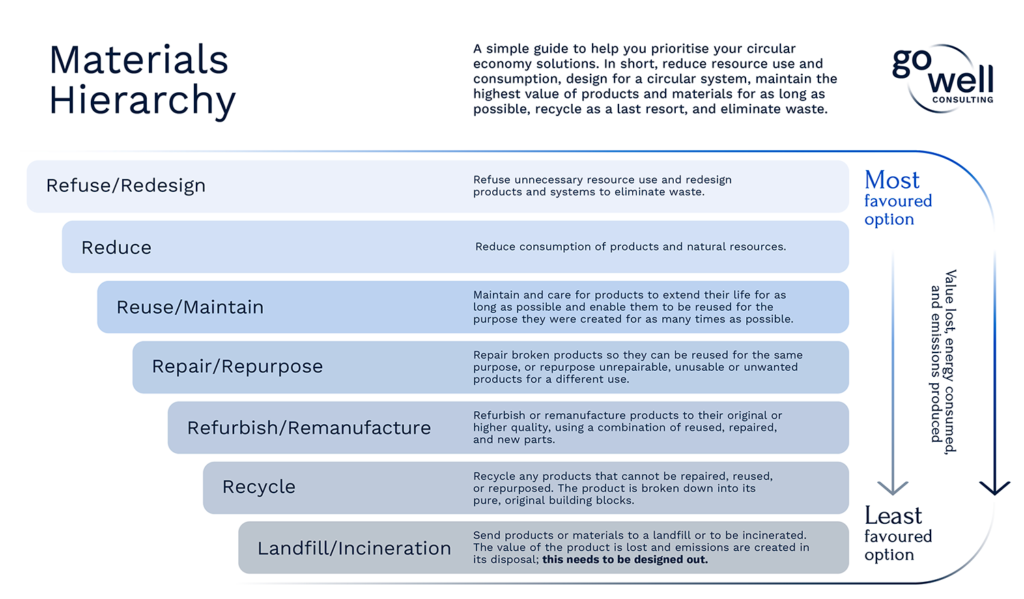On 1st February 2024, New Zealand’s new recycling standards came into effect, which means kiwis are now following the same guidelines for which items can and can’t go into their kerbside recycling bins. This change is a result of many years of dedicated mahi by people in the waste and recycling industries. Previously, the items accepted in kerbside recycling were determined by local councils (who are responsible for sorting what they collect and finding recyclers to buy all the different materials). This resulted in a huge variety of what was and wasn’t accepted in kerbside recycling bins across the motu, further exacerbating the huge problem of ‘recycling confusion’. This new standardisation has been based on what materials are valuable to recyclers and therefore are highly likely to actually be recycled.
In addition, a lot of consideration has been given to the sorting phase and how to make that easier. The longer and more complicated it is to sort what is collected, the more costly it is. These sorting costs can then result in it being cheaper to landfill materials, as a buyer/recycler can not be found at the required price to cover those costs (on a side note, it is important to remember that the cost of landfilling is increasing year on year to help drive financial incentives to divert resources). The standardisation is expected to reduce the amount of materials sent to landfill (along with the associated emissions and disposal costs), as well as increase the quality of materials collected for recycling across the country.
What does it mean for households?
From 1st February, the following items can go into your kerbside recycling bin (remember, they must be clean!):

The following items will no longer be accepted in your kerbside recycling bin:
- All lids
- Items less than 50mm (e.g small cosmetic and spice containers)
- Liquid paperboard packaging/Tetra Pak cartons
- Aerosol cans (steel and aluminium)
- Plastics 3, 4, 6 and 7
- Aluminium foil and trays
- Items over 4 litres
Don’t lose hope about the items above, however, as even though they aren’t accepted in your kerbside recycling bin, it doesn’t mean they can’t be recycled full-stop. Technically speaking, every product or piece of packaging is recyclable, with the right equipment, but it all comes down to the economics. Will someone buy the recycled material at a price that makes it worthwhile for the collectors and sorters?
Unfortunately, due to New Zealand’s small, spread out population and a lack of investment in waste management, we lack the infrastructure needed to recycle many materials onshore. Instead, much of what is collected and sorted for recycling is sent overseas and our geographic isolation adds to the cost of getting it there (hence why the items we accept in kerbside recycling are limited). However, there are a number of specialist recycling programmes across the motu that are seeking to capture more specialist items and keep their materials in circulation; we’ve compiled some of them below.
Lids
- Go Recycle in Auckland accepts metal bottle caps
- Sustainability Trust in Wellington accepts some metal bottle caps and some plastic ones (grades 2 & 5 only)
Liquid paperboard packaging/Tetra Pak cartons
- SaveBoard accepts all (clean) Tetra Pak carton and has drop off points across the country
Aerosol cans
- Go Recycle in Auckland accepts aerosol cans
Look out for additional recycling programmes at your local eco hubs or recycling centres, and check out national recycling programmes such as the soft plastics recycling scheme, Bunnings’ battery recycling service, Mitre 10’s lightbulb recycling collection, or Tech Collect NZ’s e-waste recycling programme. Terracycle also has a number of free recycling programmes in partnership with brands such as Colgate, Gilette, and Garnier. The Ministry for the Environment (MfE) has compiled a helpful website with how to recycle items not accepted in kerbside.
Also, “every dollar you spend is a vote on the world you want to live in” (Source unknown). So support those businesses that are making the effort to make sure their products and packaging and going to landfill.
What does it mean for businesses?
If your business uses kerbside recycling, all of the above guidance will apply. If your business contracts a recycling collection through a private service provider, you will need to check with them whether they are aligning with the recycling standardisation – it is expected that most service providers will, however some may choose to accept additional items, if they have a buyer/recycler for the materials.
If your business sells products, the recycling standardisation offers a great opportunity to review the products you are selling and the packaging you choose to use, and whether they align with the new kerbside recycling guidelines. Kerbside recycling is, by far, Aotearoa’s biggest material collection system accessible to almost all New Zealanders. Therefore, if you’re a business committed to designing out waste and pollution and helping us achieve a circular economy, then it makes sense for you to design your products and packaging to fit in this recycling system.
We appreciate that the challenges and nuances of product and packaging design go beyond just their recyclability. Cost, functionality, availability, user experience/expectations, size, product protection, and more are all considerations that need to be made. However, now that the kerbside recycling rules have been standardised, it is easier than ever for business to confidently align with this circular economy solution. We must reiterate at this point that, as per our Go Well Materials Hierarchy below, recycling is the last option of a circular economy. It is far better (less emissions, less extraction of natural resources, and less pollution) to design out unnecessary packaging or product components, and to reuse, repair, repurpose and remanufacture ahead of recycling.

We are currently working with cosmetics brand essano to help them navigate the new recycling standardisation and make as much of their packaging align to the new standards as possible. There are some easy wins, along with some complex challenges, but we all need to be rising to the challenge as they are to move towards a sustainable future. If you need some support, get in touch.
Written by our sustainability consultant Kate Lodge.

